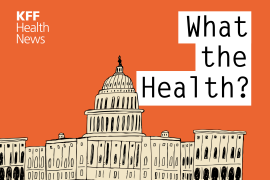Hotel-Inspired Amenities Let Hospitals Get A Leg Up On Competitors
While increased services can improve health outcomes and cut down on the spread of infection, many hospitals are also turning toward features such as room service and massages as a way of attracting patients. Meanwhile, some hospitals start to lift strict limits on ICU visits.
The New York Times:
With Room Service And More, Hospitals Borrow From Hotels
At the Henry Ford West Bloomfield Hospital outside Detroit, patients arrive to uniformed valets and professional greeters. Wi-Fi is free and patient meals are served on demand 24 hours a day. Members of the spa staff give in-room massages and other treatments. While clinical care is the focus of any medical center, hospitals have many incentives to move toward hotel-inspired features, services and staff training. Medical researchers say such amenities can improve health outcomes by reducing stress and anxiety among patients, while private rooms can cut down on the transfer of disease. (Weed, 8/1)
The Wall Street Journal:
ICUs Ease Restrictions On Visitors
Some hospital intensive-care units are bucking tradition by allowing patients’ family and friends to visit for unlimited hours. ICUs care for the sickest patients in high-tech, antiseptic environments. Most have strict limits on what time relatives can come and how long they can stay. Children typically are banned. Hospitals say the restrictions are meant to keep patients from being disturbed when they need calm and to allow medical staff to get on with their jobs uninterrupted. (Lagnado, 8/1)
And in other hospital news —
Stat:
Why It’s So Hard To Treat Heart Attack Patients Quickly — And How To Fix It
Saving a patient from a heart attack requires swift action by a team working with assembly-line precision. But in cities across the United States, the medical response is nowhere near as efficient as your average auto plant. One key reason: a lack of communication among emergency and hospital personnel. A study published Monday in the journal Circulation shows it doesn’t have to be that way. (Ross, 8/1)
The Texas Tribune:
Family Kept In The Dark After Death At Texas Psychiatric Hospital
Keith Clayton's death is an example of the sometimes-fatal effects of restraints used to subdue patients at Texas' state-run facilities for people with mental illness — institutions that face an uncertain future due to unpredictable funding, crumbling infrastructure and a growing demand to house patients from an overcrowded criminal justice system. At a time when the state claims to be reducing its reliance on forcible restraints, Keith Clayton's case raises questions about the secrecy around such incidents, particularly when they end in death. (Walters, 8/2)
Kaiser Health News:
Web Tool Reduced Medical Missteps During Hospital-Shift Changes: Study
It’s 4 p.m., and if you’re a hospital patient, that could be one of the most critical times of the day. Your doctor’s shift just ended, and someone new will take over your care. How these professionals communicate could have major repercussions for your recovery. Those shift changes, also known as handoffs, are prime opportunities for key information about a patient’s condition to get lost in the shuffle. It’s essential that these relevant points are not only captured, but also effectively conveyed between hospital staff. (Luthra, 8/1)






